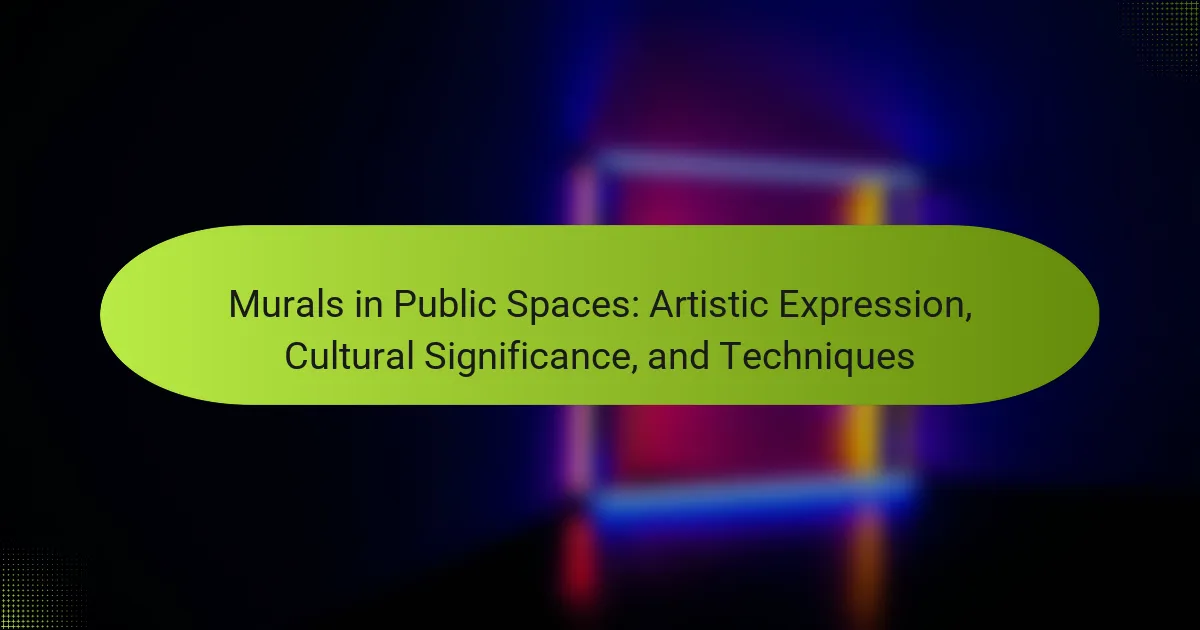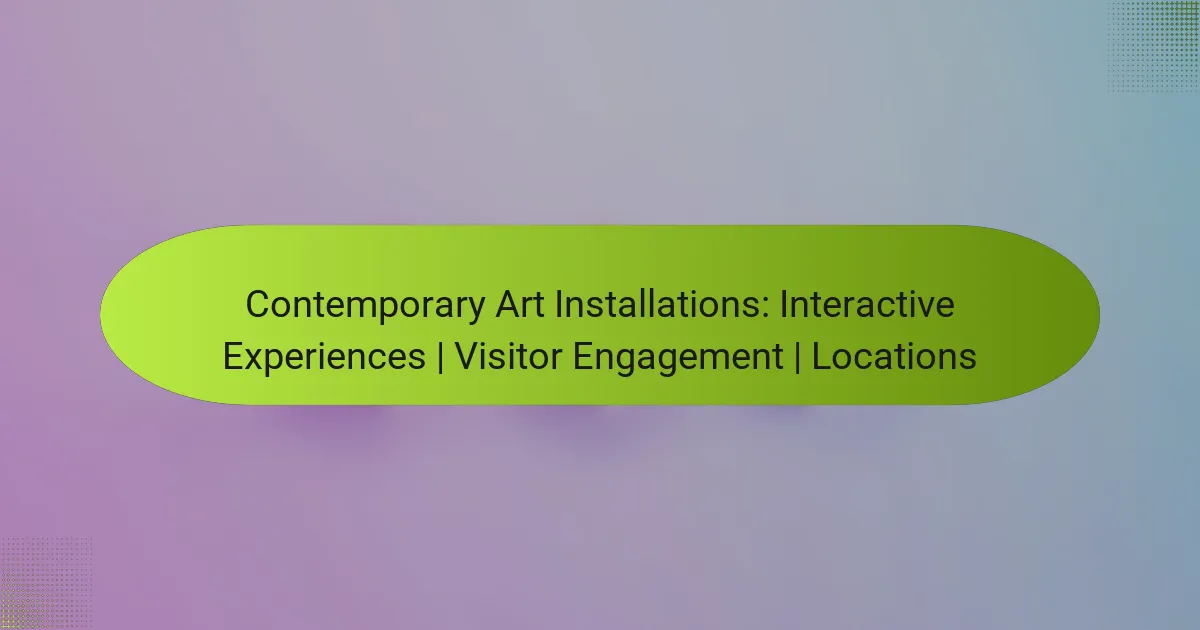Banksy has profoundly shaped urban culture by challenging societal norms and inspiring street art movements. His work critiques consumerism and social injustices while fostering discussions about art and identity. Controversies surrounding his anonymity and the commercialization of his art raise ethical questions. This article explores his impact on urban culture, the themes in his work, and the controversies that define his legacy.

How has Banksy influenced urban culture globally?
Banksy has significantly influenced urban culture by challenging societal norms, sparking dialogue, and inspiring street art movements worldwide. His work often critiques consumerism, political issues, and social injustices, resonating with diverse audiences. For example, his piece “Girl with a Balloon” symbolizes hope and innocence, becoming iconic in various urban settings. Additionally, Banksy’s anonymity adds a layer of intrigue, fostering discussions about art and identity. His controversial installations, such as the shredded painting at Sotheby’s, blur the lines between art and commerce, prompting debates on value and authenticity in contemporary art.
What are the key themes in Banksy’s artwork?
Banksy’s artwork primarily explores themes of social justice, anti-capitalism, and political commentary. His pieces often challenge authority and provoke thought on societal issues. The use of satire and dark humor is prevalent, making his art both accessible and impactful. Additionally, themes of anonymity and the ephemeral nature of street art reflect his unique approach to urban culture.
How do Banksy’s themes resonate with different audiences?
Banksy’s themes resonate with diverse audiences through their social commentary, humor, and political critique. His art challenges societal norms, sparking conversations among various demographic groups. For example, youth often connect with his anti-establishment messages, while art enthusiasts appreciate his innovative techniques. Additionally, his works address global issues like poverty and war, appealing to activists and social justice advocates. This multifaceted approach allows Banksy to engage a wide range of viewers, from casual observers to serious critics, creating a lasting impact on urban culture.
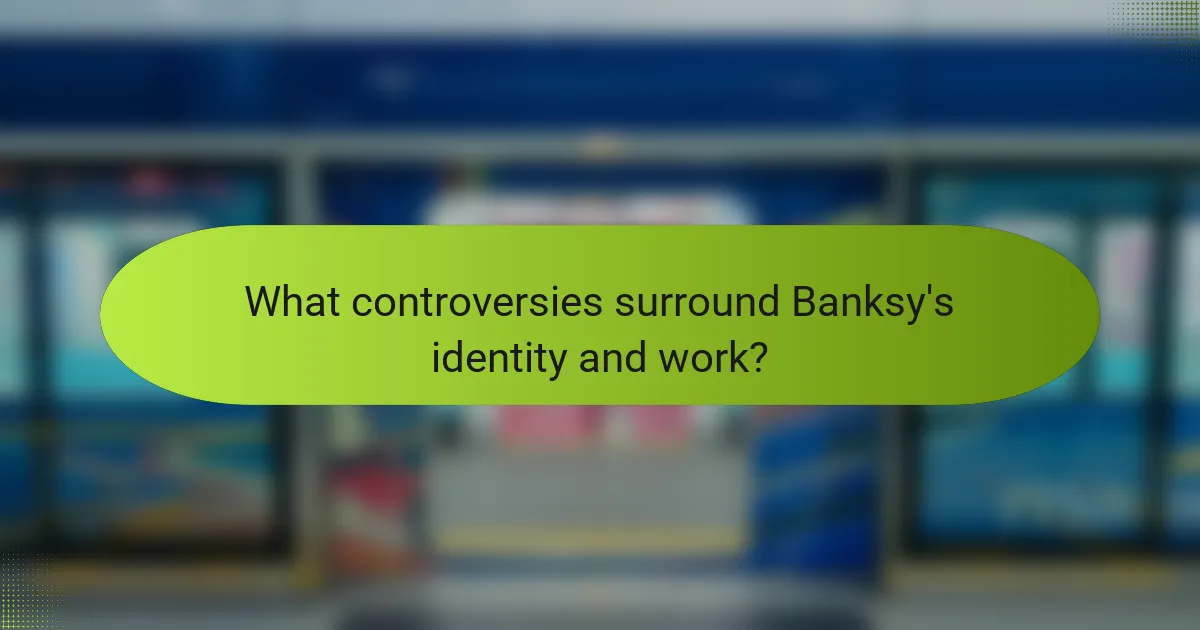
What controversies surround Banksy’s identity and work?
Banksy’s identity and work are surrounded by controversies regarding anonymity, authenticity, and commercialization. His true identity remains unknown, sparking debates about the nature of art and authorship. Critics argue that his work, while impactful on urban culture, often commodifies social issues. Additionally, the illegal nature of street art raises ethical questions about vandalism versus artistic expression.
How does anonymity shape public perception of Banksy?
Anonymity enhances public perception of Banksy by creating intrigue and mystique. The lack of a known identity allows audiences to focus on the art rather than the artist. This anonymity fuels speculation, leading to diverse interpretations of his work. As a result, Banksy’s pieces often provoke discussions on social and political themes, reinforcing his impact on urban culture.
What legal challenges has Banksy faced regarding his art?
Banksy has faced numerous legal challenges primarily related to copyright issues and property rights. His unauthorized works often appear on private property, leading to disputes over ownership and the legality of his art. In 2019, a court ruled in favor of a property owner who removed a Banksy mural, emphasizing the tension between street art and legal frameworks. Additionally, Banksy’s art has been the subject of trademark disputes, particularly concerning the sale of merchandise featuring his works. These challenges highlight the ongoing conflict between artistic expression and legal protections in urban culture.
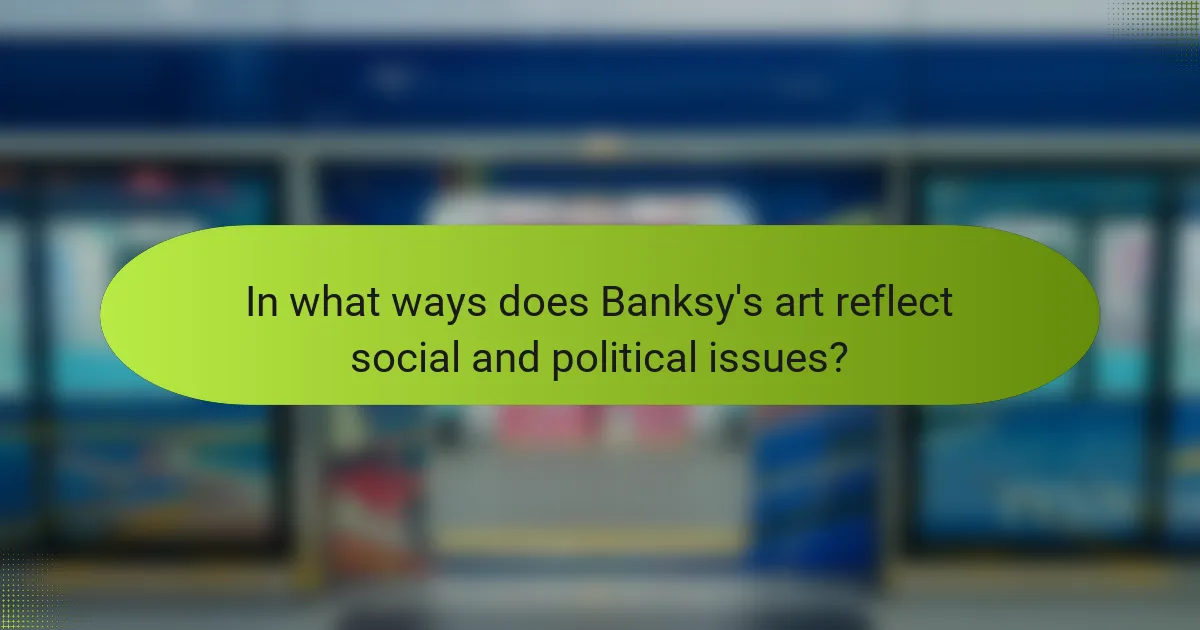
In what ways does Banksy’s art reflect social and political issues?
Banksy’s art reflects social and political issues through provocative imagery and sharp satire. His works often address themes like consumerism, war, and inequality. For example, “Girl with a Balloon” symbolizes hope amidst despair. His street art challenges authority and encourages public discourse. Additionally, Banksy’s anonymity amplifies his critique of societal norms, making his messages more impactful.
Which specific events or movements has Banksy addressed through his work?
Banksy has addressed various social and political issues through his work, including war, consumerism, and inequality. His art critiques government policies, capitalism, and environmental concerns. Notable movements he has highlighted include anti-war sentiments, refugee crises, and social justice campaigns. For example, his piece “Girl with a Balloon” symbolizes hope amidst despair, while “Dismaland” critiques consumer culture and societal norms. These works reflect his unique ability to provoke thought and inspire change.
How do regional interpretations of Banksy’s messages vary?
Regional interpretations of Banksy’s messages vary significantly based on cultural, social, and political contexts. In the UK, his works often critique government policies and social inequalities. In contrast, interpretations in the Middle East may focus on themes of conflict and resistance. In urban areas, Banksy’s art serves as a voice for marginalized communities, highlighting local issues. Conversely, in tourist-heavy locations, his work can be commodified, shifting its original intent. This variation illustrates how local factors influence the perception and impact of his art.
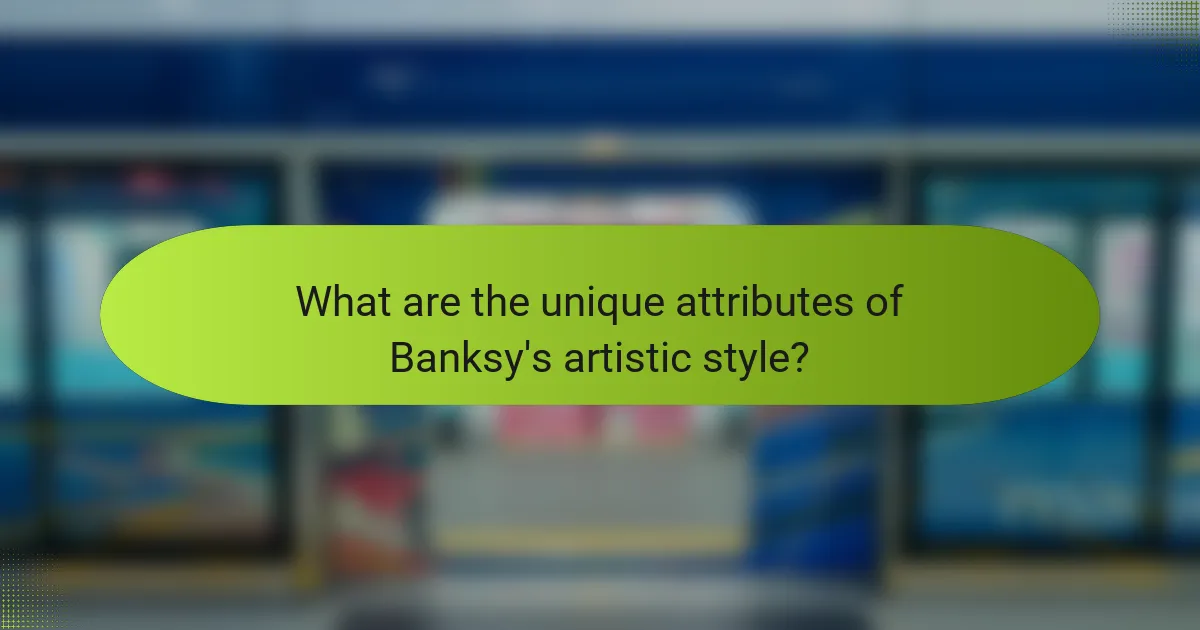
What are the unique attributes of Banksy’s artistic style?
Banksy’s artistic style is characterized by its satirical social commentary, use of stencils, and anonymity. His unique attributes include a blend of humor and political critique, often addressing themes of consumerism, war, and inequality. The distinctive visual style features bold imagery, stark contrasts, and urban settings, making his work instantly recognizable. Additionally, Banksy’s choice of location for his pieces often amplifies their impact, creating a dialogue with the surrounding environment.
How does Banksy’s use of satire differentiate him from other street artists?
Banksy’s use of satire sets him apart from other street artists by blending humor with social critique. His works often address political issues, consumerism, and societal norms, provoking thought while entertaining. This unique approach allows him to engage a broad audience, making his messages more impactful. Unlike many street artists who focus solely on aesthetics, Banksy’s satirical style invites viewers to reflect on deeper meanings and challenges societal conventions. His distinctive blend of irony and art creates a signature that resonates globally, further solidifying his influence in urban culture.
What role does humor play in Banksy’s art?
Humor is a crucial element in Banksy’s art, serving to engage audiences and provoke thought. It often highlights social issues and critiques political systems, making serious topics more accessible. By using irony and satire, Banksy creates a unique commentary that resonates with urban culture. This approach allows him to challenge norms while entertaining viewers, effectively blending humor with impactful messages.
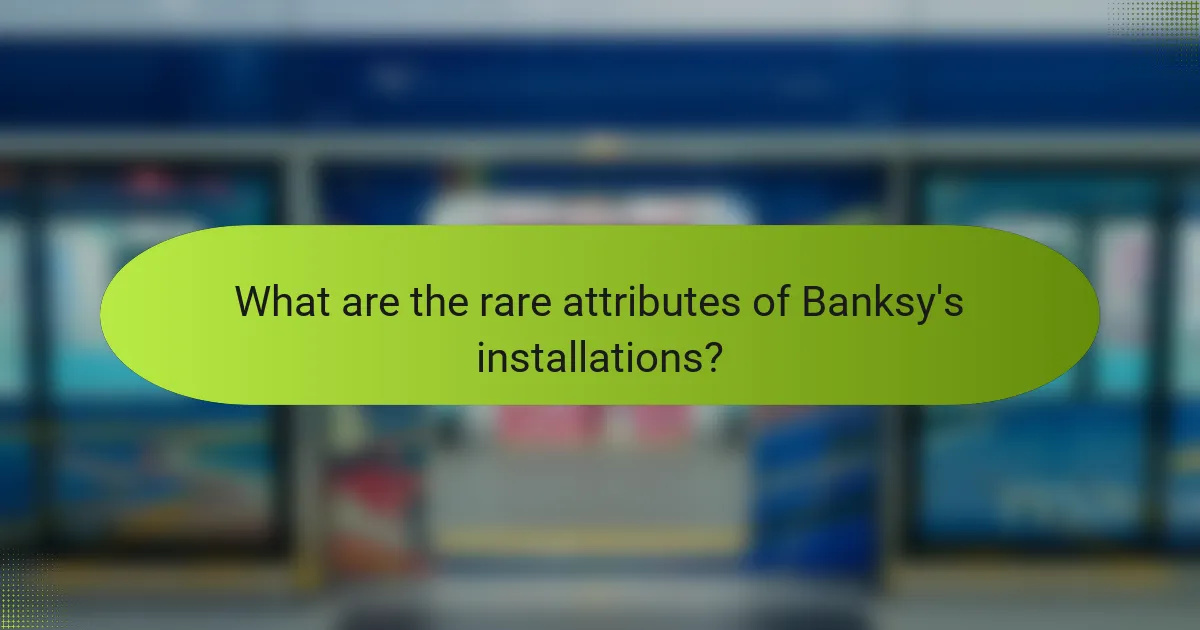
What are the rare attributes of Banksy’s installations?
Banksy’s installations feature rare attributes that enhance their cultural significance. One unique aspect is the use of unexpected locations, often in politically charged environments. Another rare trait is the incorporation of augmented reality elements, allowing viewers to engage with the artwork digitally. Additionally, Banksy’s installations sometimes include interactive components, inviting public participation. Lastly, the anonymity of the artist adds a layer of intrigue, making each piece a subject of speculation and discussion.
How do specific locations enhance the meaning of Banksy’s pieces?
Specific locations amplify the meaning of Banksy’s pieces by providing context and relevance to social issues. Urban settings often reflect the themes of his art, such as consumerism, war, and authority. For instance, a piece in a conflict zone can highlight the absurdity of violence, while one in a tourist area may critique commercialization. The interaction between the artwork and its environment creates a dialogue that deepens the viewer’s understanding. This unique attribute of location enhances the impact and interpretation of Banksy’s work, making it resonate more profoundly with local and global audiences.
What is the significance of Banksy’s temporary installations?
Banksy’s temporary installations significantly challenge societal norms and provoke public discourse. They often address themes like consumerism, war, and environmental issues, making art accessible in urban spaces. These works create a sense of urgency and relevance, prompting viewers to engage critically with contemporary issues. Banksy’s unique approach transforms public spaces into platforms for dialogue, reinforcing the impact of street art on urban culture.
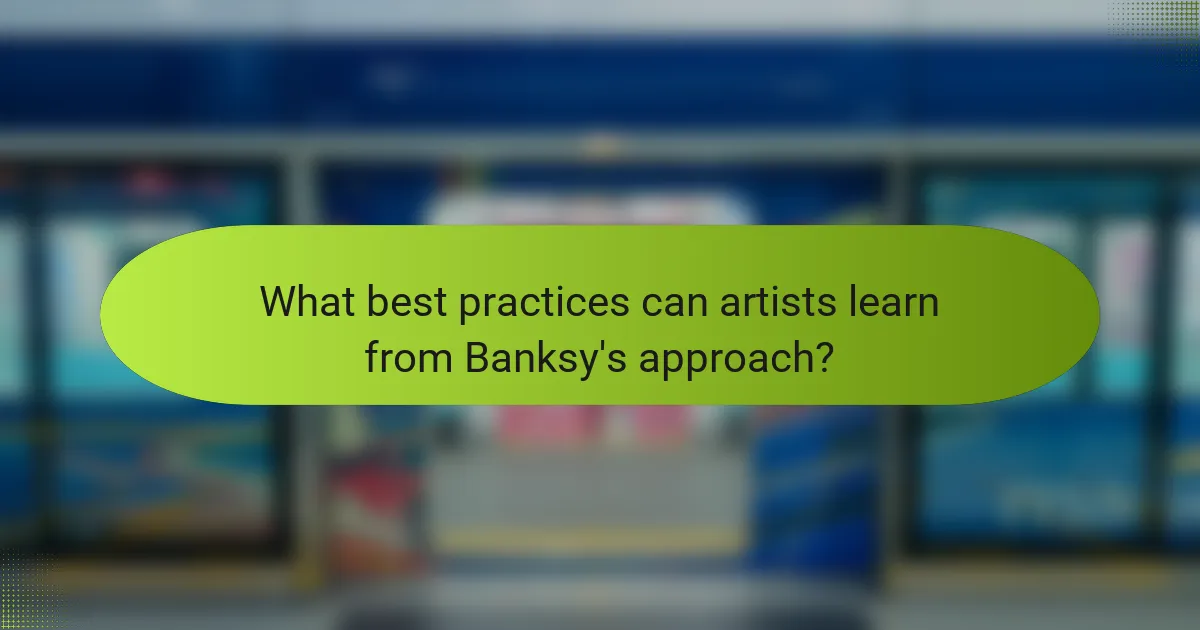
What best practices can artists learn from Banksy’s approach?
Artists can learn several best practices from Banksy’s approach to urban culture. First, Banksy emphasizes the importance of social commentary in art, encouraging artists to address contemporary issues. Second, he utilizes anonymity to provoke curiosity and discussion, allowing the artwork to speak for itself. Third, his strategic placement of art in public spaces highlights accessibility, making art available to a wider audience. Lastly, Banksy’s ability to blend humor with serious themes demonstrates the effectiveness of engaging audiences emotionally while delivering impactful messages.
How can emerging artists leverage social commentary in their work?
Emerging artists can leverage social commentary by drawing inspiration from Banksy’s impactful themes. They should focus on social issues, use public spaces for visibility, and create thought-provoking art. Banksy’s unique ability to blend humor with criticism illustrates how art can challenge societal norms. By addressing contemporary issues, artists can engage audiences and provoke discussions, enhancing their relevance in urban culture.
What common mistakes should be avoided when engaging with urban art?
To engage with urban art effectively, avoid these common mistakes. Ignoring the context of the artwork can lead to misinterpretation. Failing to recognize the artist’s intent, particularly in the case of Banksy, may diminish the artwork’s significance. Engaging without understanding the local culture can result in disrespect. Additionally, overlooking the legal implications of urban art can lead to unintended consequences. Lastly, dismissing the dialogues surrounding themes of social justice and political commentary can undermine the impact of the piece.

